- Acne
- Actinic Keratosis
- Aesthetics
- Alopecia
- Atopic Dermatitis
- Buy-and-Bill
- COVID-19
- Case-Based Roundtable
- Chronic Hand Eczema
- Chronic Spontaneous Urticaria
- Drug Watch
- Eczema
- General Dermatology
- Hidradenitis Suppurativa
- Melasma
- NP and PA
- Pediatric Dermatology
- Pigmentary Disorders
- Practice Management
- Precision Medicine and Biologics
- Prurigo Nodularis
- Psoriasis
- Psoriatic Arthritis
- Rare Disease
- Rosacea
- Skin Cancer
- Vitiligo
- Wound Care
Article
Examining current trends in scar treatment
Although every scar tells a story, it is a tale better spoken by the dermatologist and plastic surgeon who can help to reduce its appearance. To do so, physicians today are using improved protocols in laser treatment and beyond.
Although every scar tells a story, it is a tale better spoken by the dermatologist and plastic surgeon who can help to reduce its appearance. To do so, physicians today are using improved protocols in laser treatment and beyond.
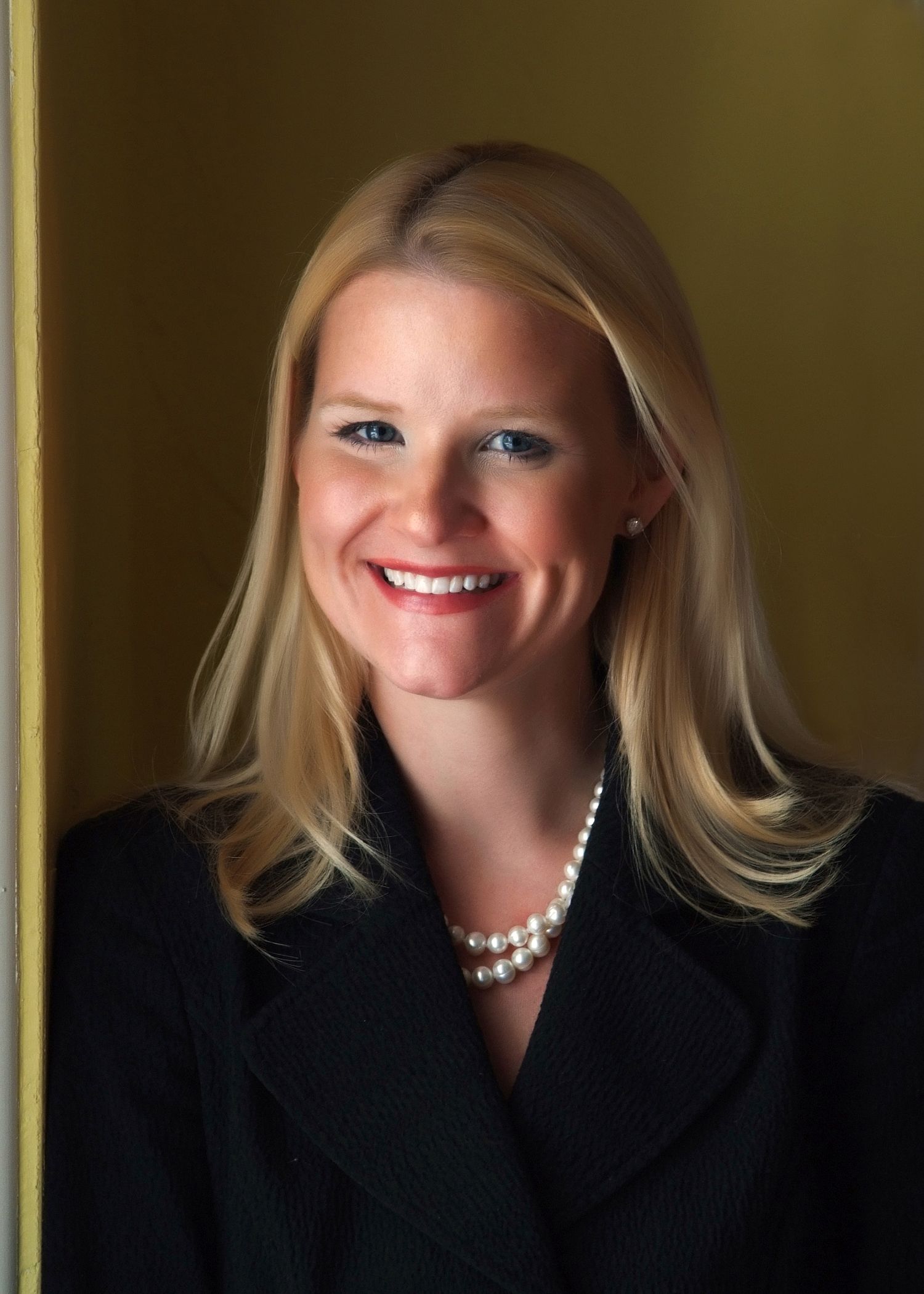
Dr. WaibelJill S. Waibel, M.D., a dermatologist at Miami Dermatology & Laser Institute, says ablative fractional lasers are the mainstay of scar rehabilitation. Dr. Waibel was one of several authors of a 2014 consensus statement about ablative fractional laser resurfacing of burn and traumatic scars. “Laser scar therapy, particularly fractional ablative laser resurfacing, represents a promising and vastly underused tool in the multidisciplinary treatment of traumatic scars,” she and co-authors concluded.
According to Dr. Waibel, every scar - acne, burn, traumatic, and surgical - is improved by laser. She also notes that evidence is emerging that shows keloid is actually a disease (not a type of scar) with epigenetics consistently showing six genes observed in patients with keloids.
The fractional laser creates a small wound (120 µ) that is healed readily by the body with the appearance of almost-normal skin-both clinically and histologically, says Dr. Waibel. Despite this refined tool, laser treatment protocols require a skilled hand. “At a recent meeting a colleague said it best - there is no recipe, but it is for gourmet chefs!” says Dr. Waibel. “Especially work on severe burn and traumatic scars should be reserved for those board-certified dermatologists and plastic surgeons who have a solid understanding of laser physics, tissue interactions and scar physiology.”
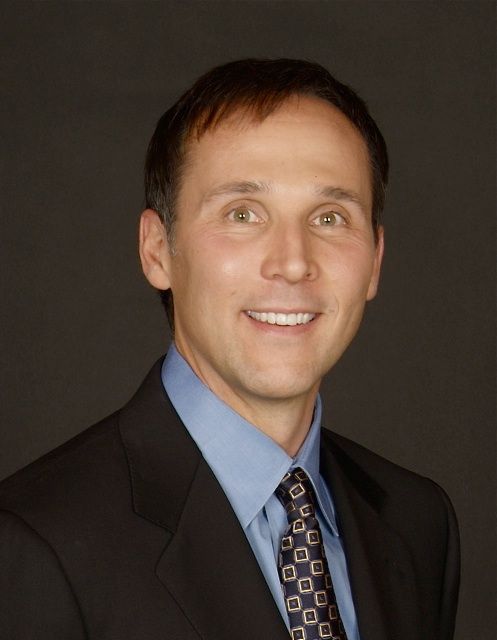
Dr. KluskaMichael S. Kluska, D.O., a plastic and reconstructive surgeon from The Center for Plastic and Cosmetic Surgery, in Greensburg, Pa., also uses lasers as part of his approach to scar treatment, reserving surgery for scars that are recalcitrant to first-line therapy. However, “Painful scars that restrict motion and have been refractory to conservative management, including topical creams, steroids, dermabrasion and laser, usually will require some type of revision,” he says
NEXT: Determining the best course of treatment
Scar Treatment
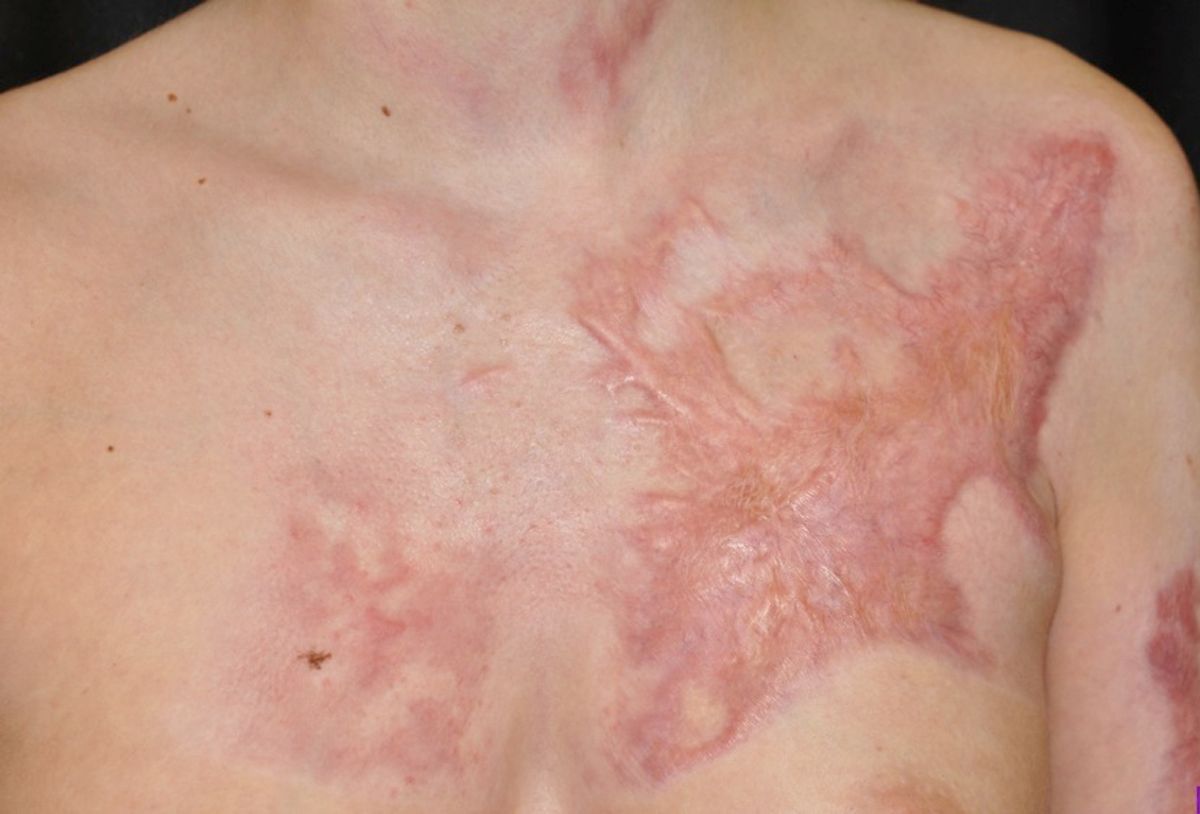
19-year-old female shown before treatment who suffered 2nd and 3rd degree burns from bonfire explosion.
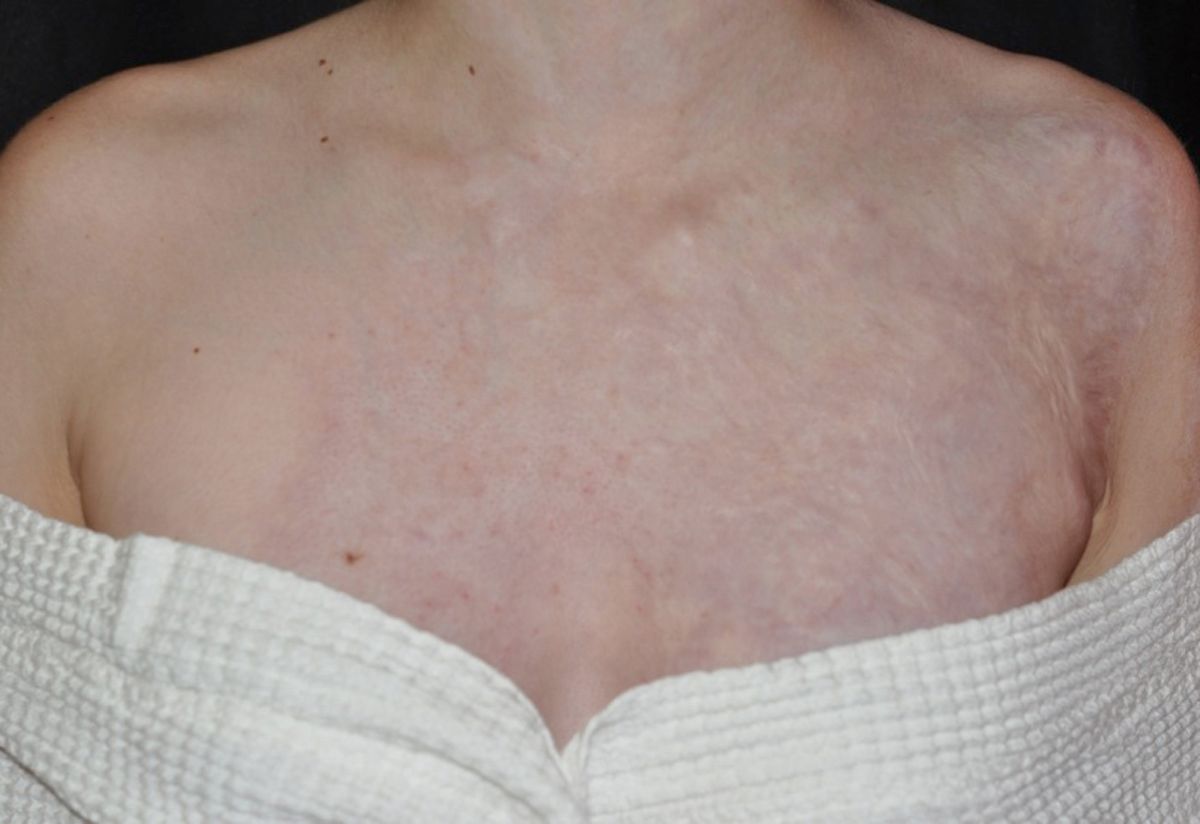
Progress after 4 laser treatment sessions. Photos: Jill Waibel, M.D.To determine the best course of treatment, specifics of the scar need to be considered, including thickness, age of scar, location, skin type and comorbid medical conditions. For erythematous scars, Dr. Waibel prefers to first use either a pulsed dye laser or an intense pulsed light device (BBL). She generally will then use either CO2 or erbium fractional ablative laser, matching the depth in microns to the approximate depth of the scar, with a recommended low density of about 10 percent. For more severe scars Dr. Waibel will often use laser-assisted delivery of triamcinolone or 5-fluorouracil after fractional ablative laser to synergistically break down scar tissue.
Dr. Kluska’s normal protocol for treating scars that are symptomatic includes topical steroid cream for two to three months, injectable steroids (if scar is refractory to topical steroids), IPL/RF for two to five treatments, and, if no response, surgical revision. “Surgical intervention is primarily reserved for scars that become symptomatic to the patient,” says Dr. Kluska.
Read more from Dr. Kluska on the plastic surgeon's approach to scar treatment
After three or four laser sessions, if the scars are under tension then they may benefit from Z-plasty, W-plasty or release surgery, says Dr. Waibel who says she often re-lases after the surgery. “Laser and minimal surgery decreases morbidity for the patients, is more effective and a cost-effective approach to treating scars,” she says.
Scar revision surgery improves scars by releasing tension, but also produces a scar - yet one that is hopefully less conspicuous. “I inform all of my patients that ‘once a scar, always a scar’ and that they will always have some type of scar that will remind them of their surgery,” says Dr. Kluska. “I also inform them that scar healing is a bit unpredictable and that some patients may develop hypertrophic or keloid scarring no matter what treatment option is used.
Dr. Waibel agrees. “Any time surgery is performed - whether plastic surgery or for a medical cause - the defect will result in a scar.”
Prevent and Improve
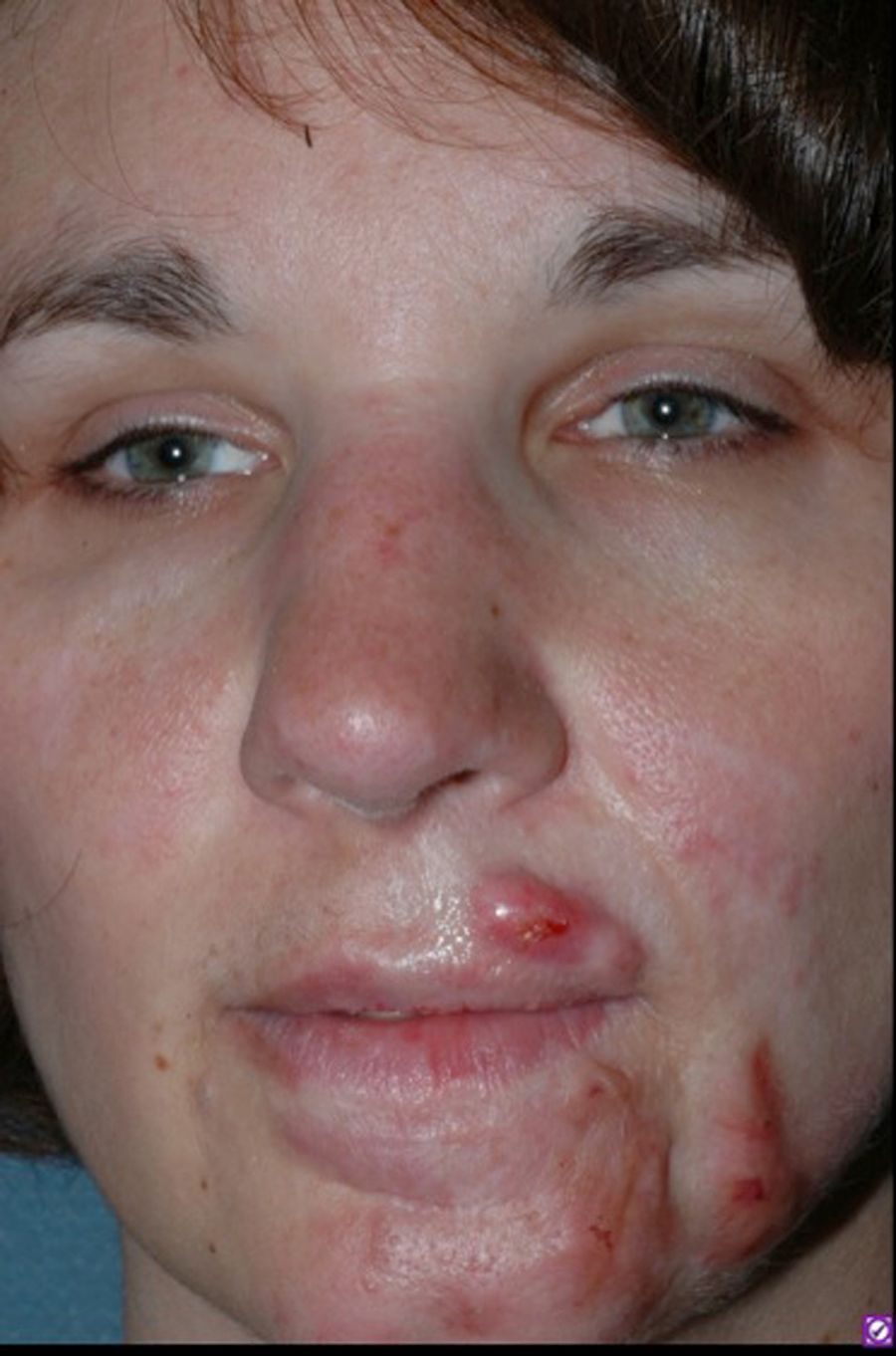
First burn patient treated by Dr. Waibel with fractional laser (non-ablative) in 2006. Has been reported in literature.
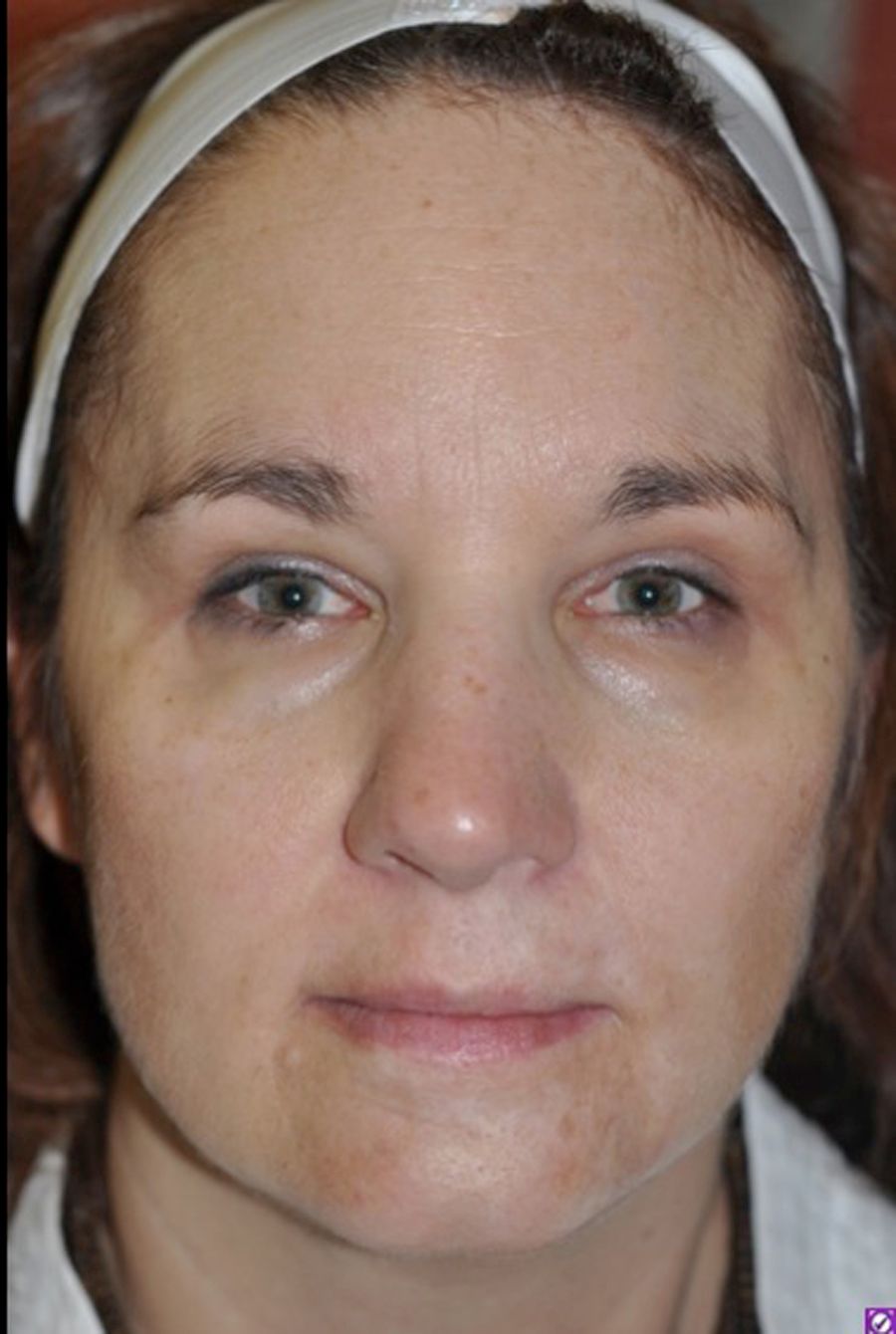
Almost ten years later, no additional treatments necessary. Delivered powerful and permanent results. Photos: Jill Waibel, M.D.According to Dr. Waibel several studies show early treatment of scars-either intraoperatively or on the day of suture removal-will help to prevent scars. “Surgical scars can also be treated with a combination of lasers as soon as the dermatologist notes that the scar has suboptimal healing,” she says. “Scars develop hypertrophy months after the procedure. Hypertrophy with surgical scars is most common and a challenge to treat in the mid chest and shoulder areas.”
For surgical scars, vascular lasers are used at lower fluences and are thought to cause platelet-mediated mechanism for scar improvement, says Dr. Waibel. “Fractional lasers appear to stimulate a tissue remodeling response with production of matrix proteins including collagen types III and possibly elastin.”
NEXT: Challenges in scar treatment
Challenges in Scar Treatment
Burn and traumatic wounds are the most challenging to treat because these are typically the worst scars seen in clinical medicine, says Dr. Waibel. “Scars that are formed after explosion injury (often seen in the military with IEDs) and burn injuries cause thermal damage to tissue that extends both laterally and deep in the skin,” she says. “Often up to 90 percent or more of the body surface is involved. Scars that heal from this injury have a plethora of different morbidities in the same scar, including residual ulcers, erythema, hypopigmentation, hyperpigmentation, increased scar thickness and decreased range of motion. Also, many patients suffer with intense pain and pruritus.”

9-year-old male from Bahrain suffered burns from house fire.
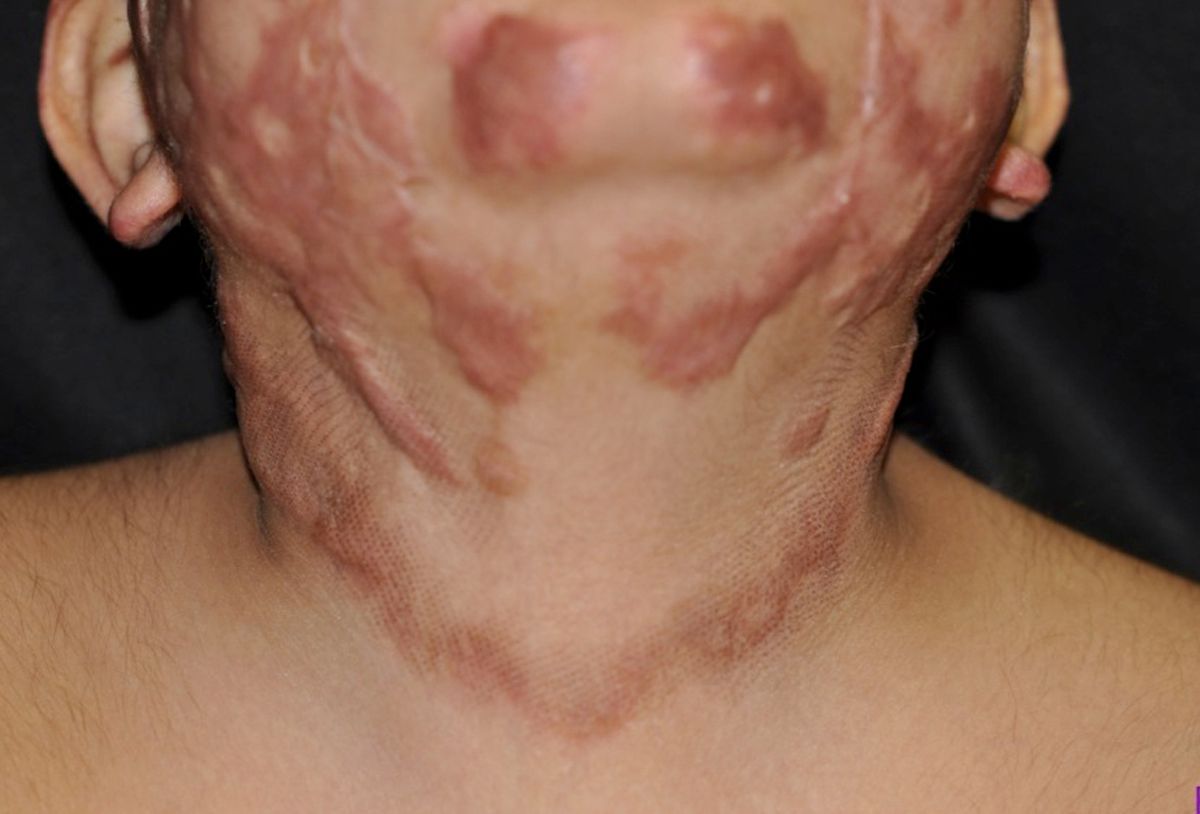
Progress after six laser treatment sessions (Note, flattening of skin). This subject is a work in progress and will return for more treatments. Photos: Jill Waibel, M.D.These scars take the most expertise to treat, says Dr. Waibel. “Often I use five or six different lasers in the same sessions, but with a very light touch. The treatment is customized to the scar.”
One of Dr. Waibel’s preferred tools in the treatment of severe burn and traumatic scar is SCARR FX-a new software upgrade on the Lumenis Ultrapulse CO2 laser that provides 150 mJ per pulse. “Scars on the back of a wounded warrior or severe injury may be 4 cm to 6 cm in thickness,” she explains. “When this situation occurs, we needed a fractional ablative laser that could go deep to vaporize the excess scar tissue. I tend to use SCARR FX on deep atrophic acne scars and severe hypertrophic scars.”
Early Laser Intervention
Dr. Waibel’s recent focus involves scar prevention by early laser intervention. “My inspiration for this work has come from the parents of burn children,” says Dr. Waibel. “The first child I treated three months after a severe burn injury was a two-year-old from New York. Her mother… flew down and looked me in the eyes and said what would you do to your own child? Having four children I replied I would lase them-gently and so we did with this beautiful little girl and her scar was almost erased.”
Since then Dr. Waibel has treated about 300 patients within the first three months of severe injury with “great results.” Dr. Waibel is currently conducting a clinical trial with Lutronic CO2 and LED light sources looking prospectively at early laser intervention. “At a cellular level I think it changes the wound-healing milieu and turns off some of the cytokine storm that creates the massive excess collagen deposition by fibroblasts in severe wounds. The laser is a lot like turning off your computer-it appears to reset the tissue.”
In other research for future applications, Dr. Waibel says she has a team examining the application of stem cells to acute burns to grow “new skin.” She is also exploring the possibility of real time imaging since current ultrasound technologies aren’t deep enough.
With regard to patient expectations, Dr. Waibel informs patients that she will improve their scars, but cannot make them perfect. “‘Better’ is our key word-with this being said, with every laser treatment, scars keep getting better,” she says. “We typically treat for three to five sessions, but on many occasions we have treated seven to nine sessions and the results keep getting better. Just last week the first burn patient I treated, and-I believe-the first ever (reported) treated with fractional laser, came for treatment… from Ohio. She is proof that the laser treatment of burn and traumatic scars is powerful and permanent.”
Newsletter
Like what you’re reading? Subscribe to Dermatology Times for weekly updates on therapies, innovations, and real-world practice tips.














